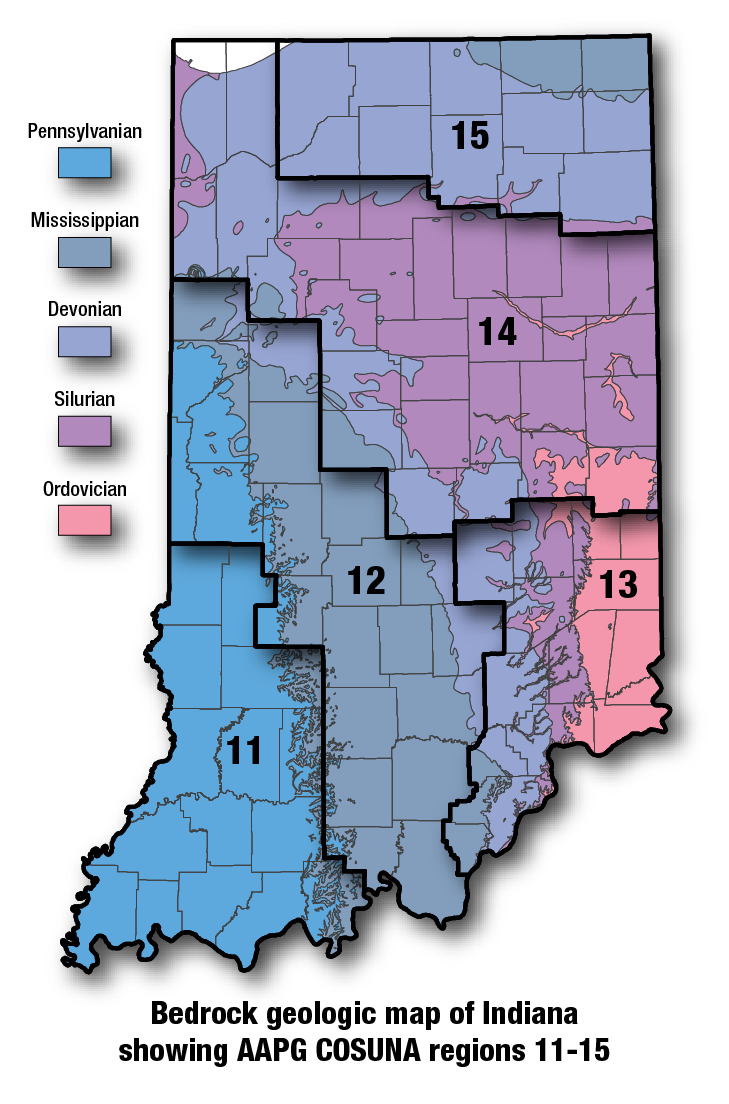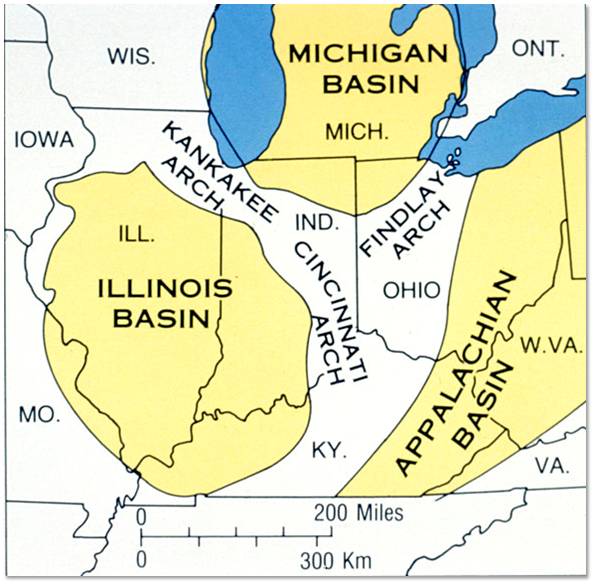Age:Mississippian Type designation:Type section: The Tick Ridge Sandstone Member was named by Gray (1978, p. 8) for Tick Ridge, a physiographic feature 3 miles (4 km) south of Taswell in Crawford County, Indiana (Gray, 1986). A section about 2 miles (3 km) north of Taswell, first described by Malott (1925, p. 129), was designated as the type section. Description:The Tick Ridge Sandstone Member is recognized only on the outcrop and only where the sandstone is sufficiently thick and massive to be topographically prominent so as to form steep slopes and overhanging cliffs (Gray, 1986). The sandstone is commonly cross stratified and in many places weathers to fretted surfaces (Gray, 1986). At the type section in Crawford County the member is 85 ft (26 m) thick (Gray, 1986). Its maximum observed thickness is 90 ft (27 m) at Spruce Pine Bluff, just east of Taswell; as a practical matter, the member is not differentiated where the sandstone is less than 30 ft (10 m) or so in thickness (Gray, 1986). Lateral transition from the sandstone into shale that contains thin limestone interbeds is remarkably abrupt, so that definition of the lateral extent of the member presents little difficulty (Gray, 1986).
|
|
Regional Indiana usage:
Illinois Basin (COSUNA 11)
Misc/Abandoned Names:None Geologic Map Unit Designation:Mtstr Note: Hansen (1991, p. 52) in Suggestions to authors of the reports of the United States Geological Survey noted that letter symbols for map units are considered to be unique to each geologic map and that adjacent maps do not necessarily need to use the same symbols for the same map unit. Therefore, map unit abbreviations in the Indiana Geologic Names Information System should be regarded simply as recommendations. |
COSUNA areas and regional terminologyNames for geologic units vary across Indiana. The Midwestern Basin and Arches Region COSUNA chart (Shaver, 1984) was developed to strategically document such variations in terminology. The geologic map (below left) is derived from this chart and provides an index to the five defined COSUNA regions in Indiana. The regions are generally based on regional bedrock outcrop patterns and major structural features in Indiana. (Click the maps below to view more detailed maps of COSUNA regions and major structural features in Indiana.) 
COSUNA areas and numbers that approximate regional bedrock outcrop patterns and major structural features in Indiana. 
Major tectonic features that affect bedrock geology in Indiana. |
References:Atherton, Elwood, Collinson, Charles, and Lineback, J. A., 1975, Mississippian System, in Willman, H. B., Atherton, Elwood, Buschbach, T. C., Collinson, Charles, Frye, J. C., Hopkins, M. E., Lineback, J. A., and Simon, J. A., Handbook of Illinois stratigraphy: Illinois State Geological Survey Bulletin 95, p. 123–163. Hansen, W. R., 1991, Suggestions to authors of the reports of the United States Geological Survey (7th ed.): Washington, D.C., U.S. Geological Survey, 289 p. Malott, C. A., 1925, The upper Chester of Indiana: Indiana Academy of Science Proceedings, v. 34, p. 103–132. Shaver, R. H., coordinator, 1984, Midwestern basin and arches region–correlation of stratigraphic units in North America (COSUNA): American Association of Petroleum Geologists Correlation Chart Series. |
|
For additional information, contact:
Nancy Hasenmueller (hasenmue@indiana.edu)Date last revised: June 6, 2017


